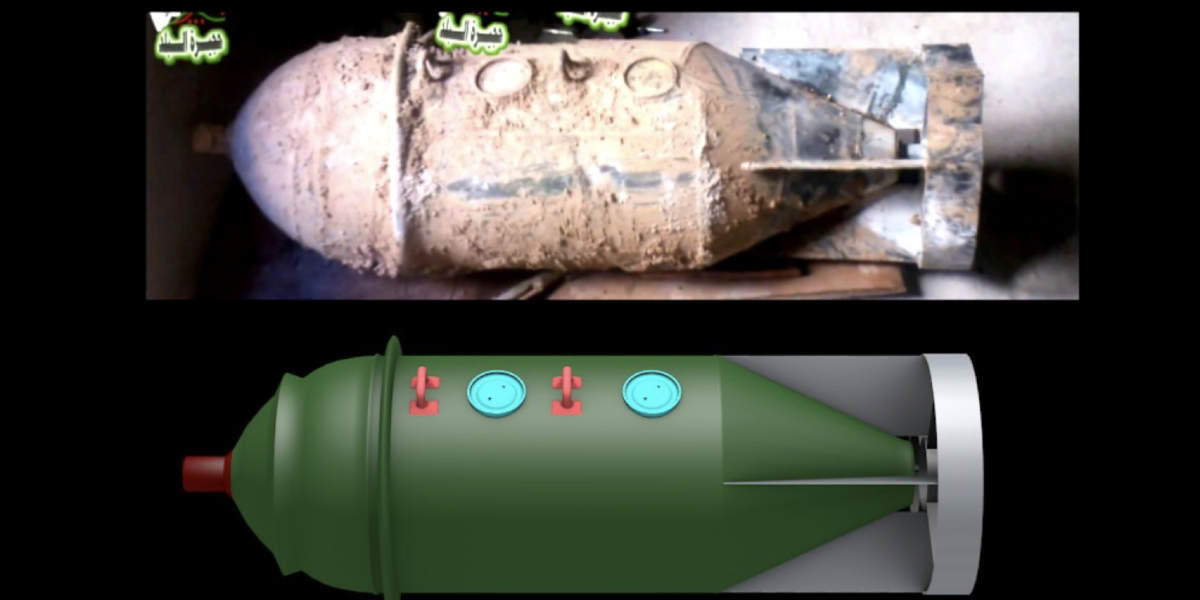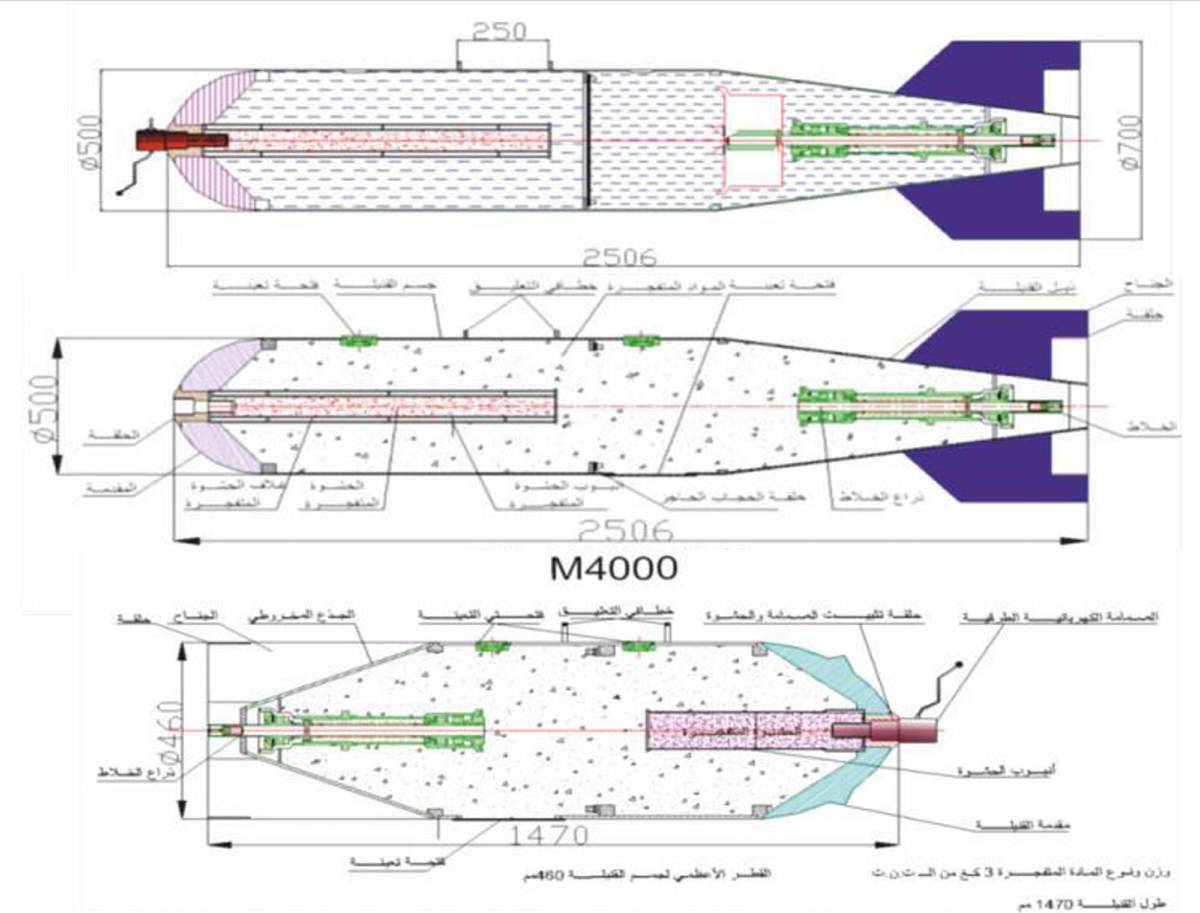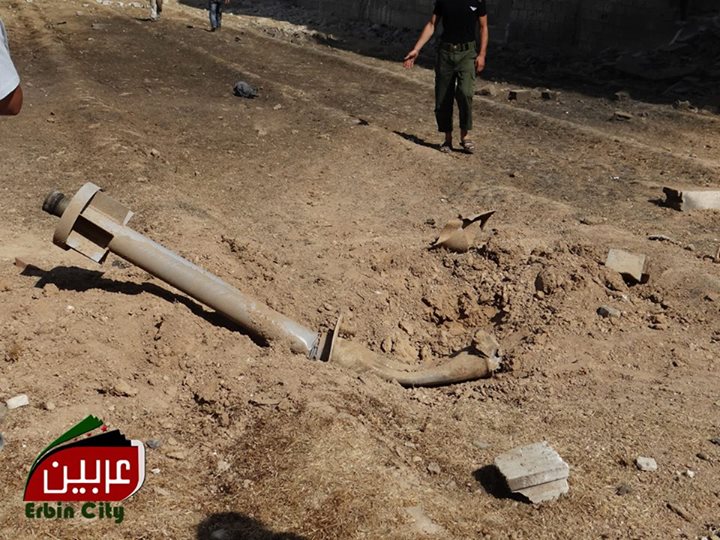Summary of Claims Surrounding the Khan Sheikhoun Chemical Attack
In the wake of the April 4th 2017 chemical attack in Khan Sheikhoun, Syria, various parties have made claims about the circumstances surrounding the attack. With today’s publication of the OPCW’s report on the attack this article aims to summarise key allegations made by each party in a systematic fashion. This article looks at claims made by the Russian, Syrian, American, and French governments, Seymour Hersh’s articles in Welt, and the OPCW report.
Time
Russia
On April 5th 2017 Sputnik quoted Russian Defense Ministry spokesman Maj. Gen. Igor Konashenkov as stating that Syrian aircraft conducted an airstrike around “11.30 to 12.30, local time, [8.30 to 9.30 GMT]”.
Syria
Walid Muallem, Syria’s Foreign Minister, stated in an April 6th press conference the first Syrian air force attack in the town occurred at 11:30am local time.
America
On April 6th 2017 the Department of Defence released a map showing what the Pentagon claimed was the flight path taken by the aircraft that launched the chemical attack. The map key states the aircraft was over Khan Sheikhoun around 337 Zulu Time to 346 Zulu Time, 6:37am and 6:46am local time.
France
The French National Evaluation on the Khan Sheikhoun attack, published on April 26th 2017, stated the following: “The French services are aware in particular of a Sukhoi Su-22 bomber which took off from the Shayrat Airbase on the morning of 4 April and launched up to six strikes around Khan Sheikhoun.”
Hersh
Seymour Hersh’s June 25th 2017 article in Welt, Trump‘s Red Line states attack took place at 6:55 a.m.
OPCW
The OPCW states their narrative is based on interviews with witnesses, and not open source information or information provided by States Party.
The OPCW report states that at “approximately 06:30, alerts were issued via hand-held radios reporting that military jets had departed an airfield and were heading in the general direction of Khan Shaykhun, amongst other areas” and “shortly afterwards, there was a swooping sound, as made by a jet when it attacks, but without a subsequent loud explosive sound.”
Two witnesses provided by the Syrian government and interviewed by the OPCW gave different accounts from accounts given by multiple witnesses, and the OPCW were unable to corroborate those narratives.
Target
Russia
The Russian Ministry of Defence stated that “According to the objective data of the Russian airspace control, Syrian aviation struck a large terrorist warehouse near Khan Shaykhun that housed a warehouse making bombs, with toxic substances.” According to Sputnik, Russian Defense Ministry spokesman Maj. Gen. Igor Konashenkov stated the target was “in the eastern outskirts of Khan Shaykhun on a large warehouse of ammunition of terrorists and the mass of military equipment.”
In addition, Sputnik reported that:
“Konashenkov said that from this warehouse, chemical weapons’ ammunition was delivered to Iraq by militants.
Konashenkov added that there were workshops for manufacturing bombs, stuffed with poisonous substances, on the territory of this warehouse. He noted that these munitions with toxic substances were also used by militants in Syria’s Aleppo.”
Russia has not provided a specific location for the warehouse.
Syria
Walid Muallem, Syria’s Foreign Minister, stated in an April 6th press conference the attack was on “an army depot belongs [sic] to the Al-Nusra Front which contains chemical weapons.”
Syria has not provided a specific location for the army depot.
America
The impact site was marked on the Department of Defence map of the attack, at around 35.449610, 36.648163, on the north side of Khan Sheikhoun:

France
The French National Evaluation only states the aircraft “launched up to six strikes around Khan Sheikhoun.”
Hersh
In Trump‘s Red Line, Hersh states “The available intelligence made clear that the Syrians had targeted a jihadist meeting site”, and the target “was depicted as a two-story cinder-block building in the northern part of town.”
Hersh states Russian intelligence established “that a high-level meeting of jihadist leaders was to take place in the building, including representatives of Ahrar al-Sham and the al-Qaida-affiliated group formerly known as Jabhat al-Nusra.”
According to the article, Russian intelligence described the building as “a command and control center that housed a grocery and other commercial premises on its ground floor with other essential shops nearby, including a fabric shop and an electronics store.” In addition:
The basement was used as storage for rockets, weapons and ammunition, as well as products that could be distributed for free to the community, among them medicines and chlorine-based decontaminants for cleansing the bodies of the dead before burial. The meeting place – a regional headquarters – was on the floor above. “It was an established meeting place,” the senior adviser said. “A long-time facility that would have had security, weapons, communications, files and a map center.” The Russians were intent on confirming their intelligence and deployed a drone for days above the site to monitor communications and develop what is known in the intelligence community as a POL – a pattern of life. The goal was to take note of those going in and out of the building, and to track weapons being moved back and forth, including rockets and ammunition.
Hersh has not provided the specific location of this two-story cinder-block building.
OPCW
The OPCW spoke to a number of witnesses to the attack, as well as considering various additional sources. Based on this, the impact of the munition linked to the release of Sarin into the environment is in the middle of a road on the north side of Khan Sheikhoun, close to the position indicated in the US Department of Defence map of the attack, 35.449610, 36.648163. The OPCW published a map of the crater:

Type of Attack
Russia
Russia stated Syrian aircraft performed the strike, providing no further information.
Syria
Syria stated Syrian aircraft performed the strike. Al Masdar News claimed Syrian military sources told them an attack on a missile factory in Khan Sheikhoun was carried out by a Syrian SU-22.
America
The Department of Defence map states the attack originated from the Shayrat Syrian Arab Air Force airfield. U.S. Secretary of State Rex Tillerson stated “We have a very high level of confidence that the attacks were carried out by aircraft under the direction of the Bashar al-Assad regime, and we also have very high confidence that the attacks involved the use of sarin nerve gas.”
France
France only describes aircraft launching “six strikes around Khan Sheikhoun“, but provides specifics about the Sarin used in the attack.
France claims to have carried out environmental samples collected at one of the impact points in Khan Sheikhoun, revealing the presence of Sarin, “”a specific secondary product (diisopropyl methylphosphonate – DIMP) formed during synthesis of sarin from isopropanol and DF (methylphosphonyl difluoride),” and hexamine. France adds a biomedical sample taken from a victim of the attack on the day of the attack shows the victim was exposed to sarin.
France states that intelligence gathered by French services indicates that “the process of synthesizing sarin, developed by the Scientific Studies and Research Centre (SSRC) […] involves the use of hexamine as a stabilizer. DIMP is also known as a by-product generated by this process.” The French evaluation then details the 2013 Saraqib Sarin attack, from which they recovered an undetonated munition dropped from a helicopter containing “100ml of sarin at an estimated purity of 60%. Hexamine, DF and a secondary product, DIMP”.
Hersh
Hersh describes the attack on the “jihadist meeting site” as being performed by a Syrian SU-24, armed with a “Russian-supplied guided bomb equipped with conventional explosives”. Hersh states as a result of that attack chemical agents were released that resulted in the casualties seen on April 4th.
OPCW
Multiple samples from the site acquired from various locals sources were tested, with Sarin, DIMP, DIPF, TPP, hexamine, and other substances related to sarin detected. The detection of additional chemical agents, such as chlorine, phosgene, or other organophosphates were not mentioned. The OPCW describes the chain of custody around these samples:
Most of the samples delivered to the FFM were supported by witness testimony and accompanied by documents, including photographs and video. Although the documentation and testimony, in most cases, provided a good degree of confidence in the chain of custody prior to receipt by the FFM, the entire chain of custody could not be categorically verified. Such samples included biomedical samples that were not collected in the presence of team members, environmental samples, and dead creatures (referred to biological-environmental samples).
One set of samples were provided by the Syrian government, after collection by an unnamed volunteer in Khan Sheikhoun, with a video recording of the collection provided. The Syrian government agency, the Syrian Scientific Studies and Research Center (SSRC), tested these samples and provided parts of the samples that were tested in OPCW laboratories. Both the SSRC and OPCW detected Sarin and hexamine from samples taken from the crater which was claimed to be the point of origin of the chemical agent by witnesses, and two metal objects removed from the crater. A number of other byproducts and degradation products from Sarin were also detected.
In addition, the OPCW analysed samples taken from victims of the attack and collected under the observation of the OPCW, which further confirmed the use of Sarin.
Aftermath
Russia
Russia provided no details of the aftermath of the attack. Russia Today reported Vladimir Putin stating that
“We have reports from multiple sources that false flags* like this one – and I cannot call it otherwise – are being prepared in other parts of Syria, including the southern suburbs of Damascus. They plan to plant some chemical there and accuse the Syrian government of an attack“
Syria
Syria provided no details of the aftermath of the attack.
America
The US provided no specific details of the aftermath of the attack, with U.N. Ambassador Nikki Haley providing the following narrative in a speech tu the UN:
“The gas that fell out of the sky yesterday was more deadly, leaving men, women, the elderly, and children, gasping for their very last breath.
And as first responders, doctors, and nurses rushed to help the victims, a second round of bombs rained down. They died in the same slow, horrendous manner as the civilians they were trying to save.”
France
The French National Evaluation states:
“On 4 April 2017, air strikes against civilians in the city of Khan Sheikhoun killed more than 80 people. According to our experts, the symptoms observed immediately afterwards (pupil contraction, suffocation, bluing of lips, white foam on faces, convulsions), the high number of deaths, and the fact that certain responders and medical staff suffered secondary contamination are consistent with the use of a highly lethal neurotoxic agent. This has now been confirmed scientifically.”
Hersh
Hersh refers to a “Bomb Damage Assessment (BDA) by the U.S. military”, that determined that:
“the heat and force of the 500-pound Syrian bomb triggered a series of secondary explosions that could have generated a huge toxic cloud that began to spread over the town, formed by the release of the fertilizers, disinfectants and other goods stored in the basement, its effect magnified by the dense morning air, which trapped the fumes close to the ground.”
Hersh refers to casualty figures based on opposition activists reports, 80 dead, and outlets such as CNN, with numbers as high at 92 dead.
Hersh also references a report by MSF which states victims showed signs of Sarin exposure, and “that victims smelled of bleach, suggesting they had been exposed to chlorine.”
Hersh concludes:
“evidence suggested that there was more than one chemical responsible for the symptoms observed, which would not have been the case if the Syrian Air Force – as opposition activists insisted – had dropped a sarin bomb, which has no percussive or ignition power to trigger secondary explosions. The range of symptoms is, however, consistent with the release of a mixture of chemicals, including chlorine and the organophosphates used in many fertilizers, which can cause neurotoxic effects similar to those of sarin.”
OPCW
The OPCW spoke to various witnesses to establish where the victims of the attack were found. Based on these interviews, and additional evidence, a map was created showing this area, southwest of the crater which produced samples that were positive for Sarin:

The OPCW details the initial scene as encountered by first responders:
Upon arrival at the site, first responders belonging to the SCD found, in addition to a small number of casualties exhibiting trauma type injuries, many civilians who appeared to have no external injuries. The symptoms of those exhibiting no external injuries, as described at that stage by non-medical personnel, included “people who were walking and then fell down”, suffocation, and muscle spasms.
Interviewees reported cases of exposure due to cross contamination, such that 10 members of the SCD presented mild to moderate symptoms and about five medical staff from medical facilities presented similar symptoms.
The OPCW collected data from medical facilities in northern Syria, including the the Idlib Health Directorate (IHD), and the Khan Shaykhun Medical Centre. The full details can be found in the report, with IHD data shown below:


Conclusion
It is apparent that there is a correlation between the narratives of the French and US governments, and the OPCW report. The Russian and Syrian government narratives are consistent with each other, but entirely inconsistent with the OPCW. The narrative presented by Seymour Hersh in his Welt piece, Trump‘s Red Line, is inconsistent with all other narratives.
Open source material, as previously collected and analysed by Bellingcat and others, is consistent with the French and US governments, and the OPCW report. It is worth noting that the OPCW report explicitly states their conclusions are not based on open source evidence.


